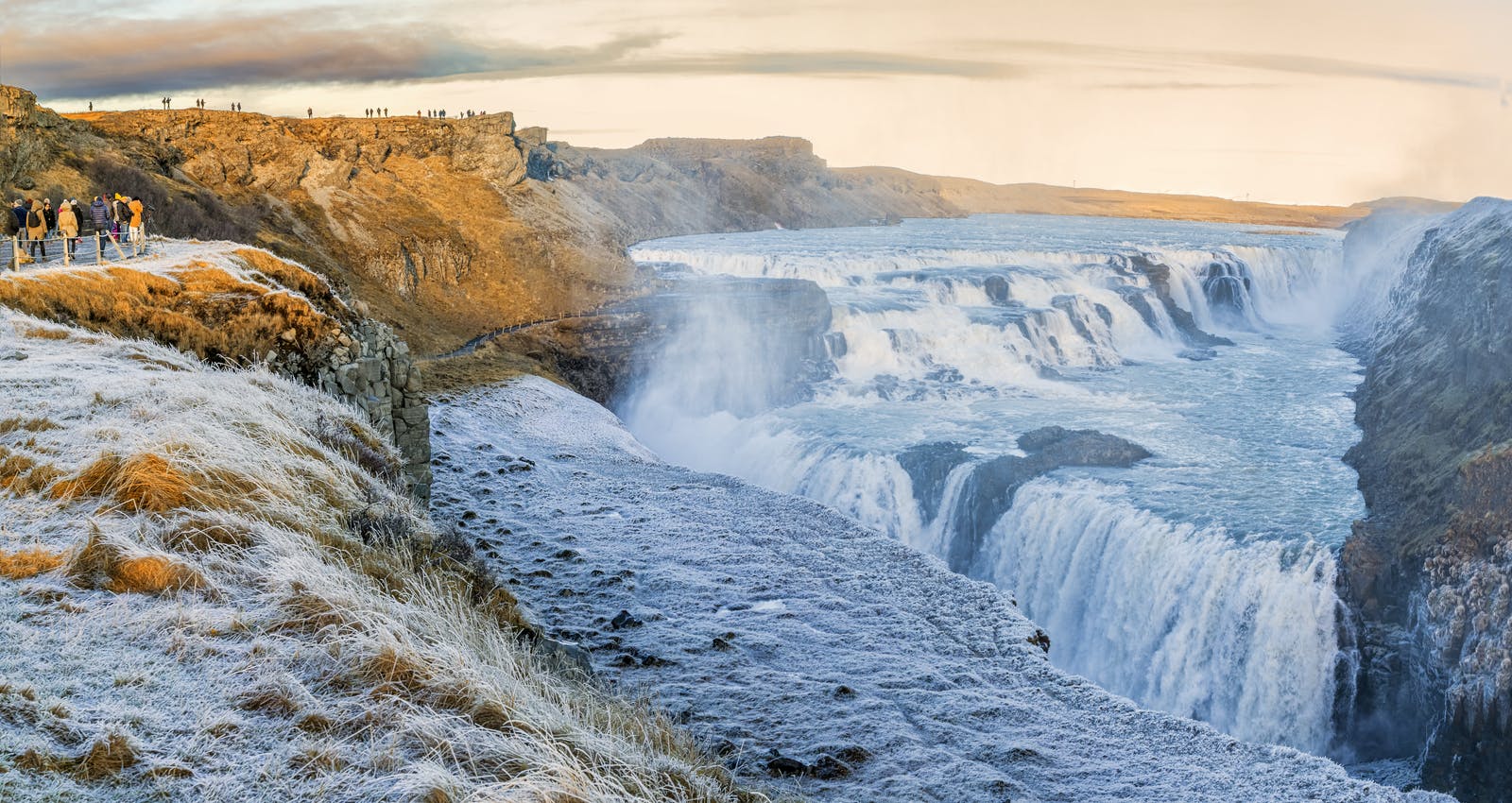
Guide to Gullfoss Waterfall in Iceland
Gullfoss, one of Iceland's most popular waterfalls, is a force of nature that leaves visitors awe-struck and humbled. Nestled in the Haukadalur Valley, about a 90-minute drive east of Reykjavík, Gullfoss is a two-tiered cascade of sheer beauty and power. It is widely considered the most famous waterfall in Iceland and is one of three stops in the famous "Golden Circle".
The name "Gullfoss" translates to "Golden Falls," a fitting moniker given the waterfall's stunning appearance when kissed by the sun. The mist from the falls often forms rainbows, adding an extra touch of magic to the scene.
Water in Gullfoss Waterfall

The Hvítá River, charged with glacial waters, plunges first 11 metres (36 feet) and then a breathtaking 21 metres (69 feet) into a rugged canyon, creating a spectacle that feels almost otherworldly. The Hvítá River starts at the glacier Langjökull before dropping down Gullfoss' two 'steps' or stages onto Gullfossgljúfur Canyon. The canyon might not seem so significant from the viewpoint, but it reaches heights of up to 70 metres (230 feet).
Gullfoss isn't just a feast for the eyes; it's a symphony for the ears. The thundering roar of the water as it crashes into the canyon below reverberates through the air, creating an immersive experience that lingers in the memory long after leaving. During summertime, approximately 140 cubic metres (459 cubic feet) of water surges down every second, whereas that number drops to around 109 cubic metres (358 cubic feet). The highest flow of water measured was 2,000 cubic metres (71,000 cubic feet) per second.
Is Gullfoss A Glacier Waterfall?
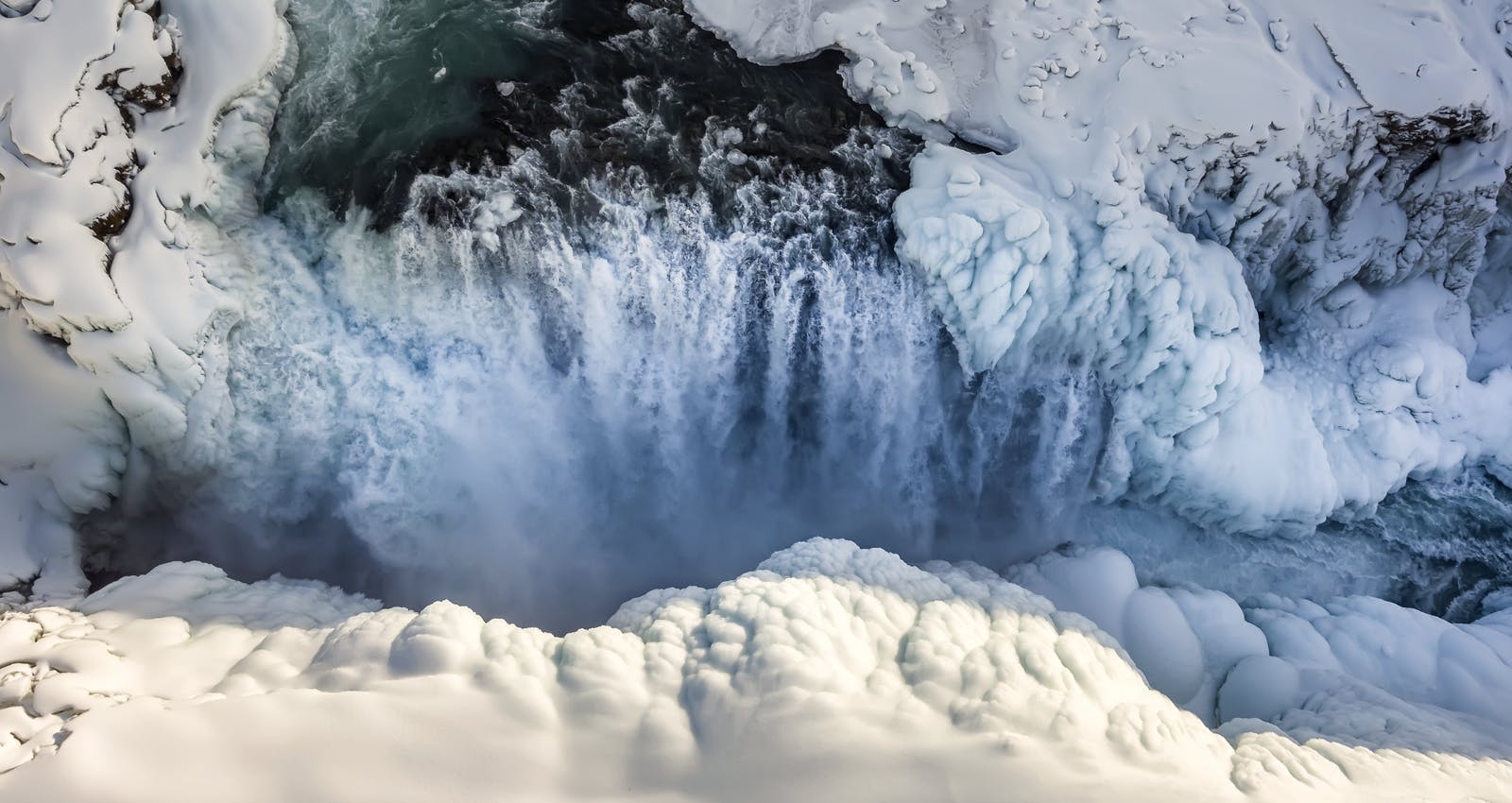
The water that flows over Gullfoss comes from the melting of the Langjökull glacier. As the glacier melts, it contributes to the Hvítá River's flow, eventually cascading over the double-tiered waterfall at Gullfoss. The water that you see at Gullfoss is a mixture of glacial meltwater and spring water.
The meltwater is muddy and carries fine particles of sediment called glacial flour. It is rich in minerals, contributing to the unique characteristics of Icelandic rivers and waterfalls.
The connection of Gullfoss to the Langjökull glacier makes the water that flows through it a part of the glacial ecosystem, adding to the allure of this natural wonder.
At Perlan Museum, visitors can explore Iceland's rare and astonishing natural wonders through a series of exhibits. Amongst others, they have a glacier exhibit showcasing their importance for the environment. They are an essential source of freshwater for the island and play a vital role in regulating the island's climate.
History
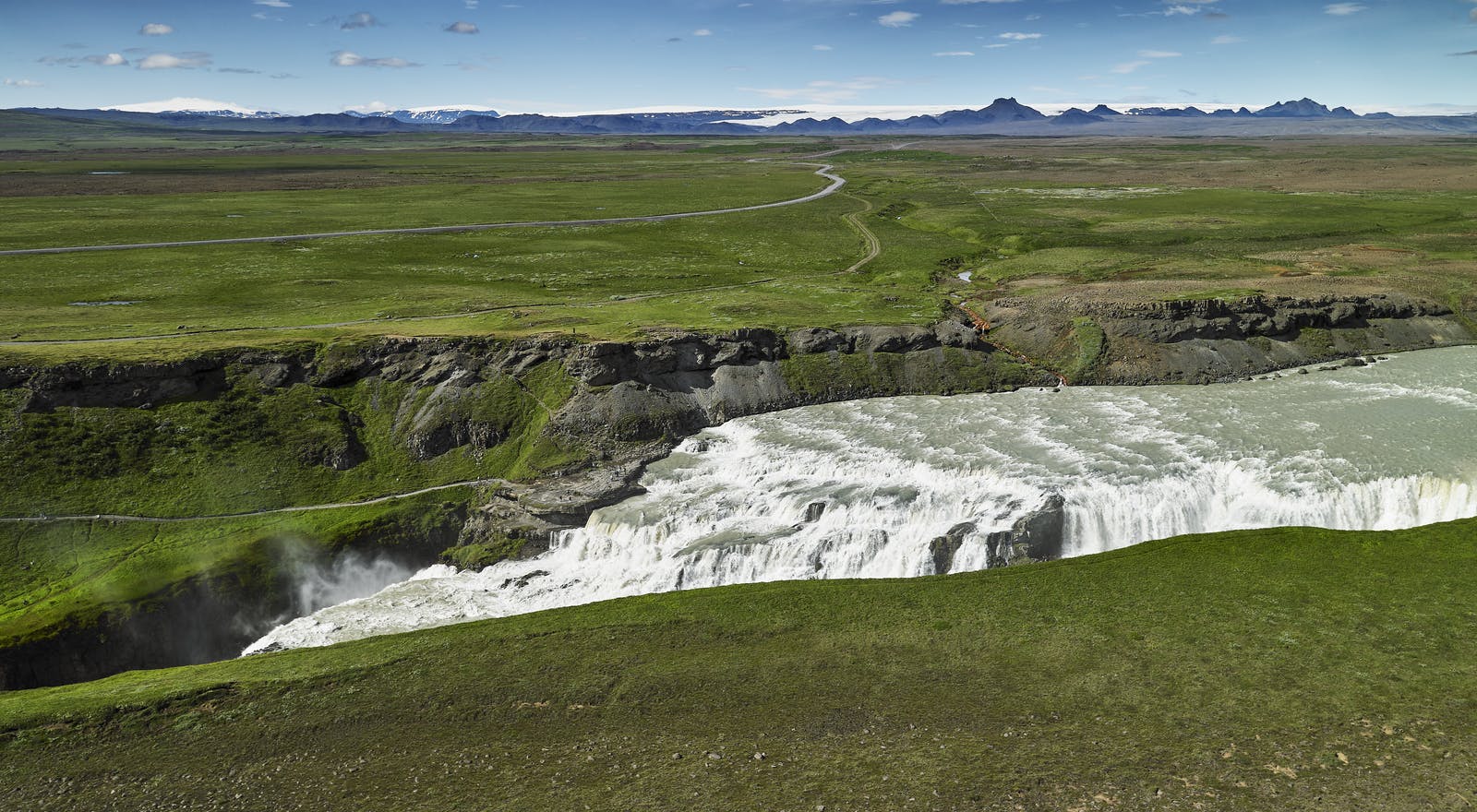
Gullfoss has been captivating visitors for centuries. In the early 20th century, the rapid industrialisation of Iceland prompted ambitious plans to harness the power of its waterfalls for electricity. With its immense water flow and dramatic drop, Gullfoss became a target for such development. The proposal aimed to divert the Hvítá River to generate electricity for nearby communities.
Enter Sigríður Tómasdóttir, the daughter of Tómas Tómasson, who owned the land surrounding Gullfoss. Sigríður, deeply connected to the area's natural beauty, vehemently opposed the plans. Faced with the potential destruction of Gullfoss, she took matters into her own hands. She took many difficult journeys by foot to Reykjavík to protest, mind the 120-kilometre (75-mile) distance each way.
She threatened to go as far as to throw herself in the waterfall in protest. Luckily, this drastic action was not needed. Her lawyer, Sveinn Björnsson, who later became Iceland's first president, helped her get the contract annulled. After this battle, the waterfall was sold to the state of Iceland and is now protected.
Practical Tips for Visiting Gullfoss
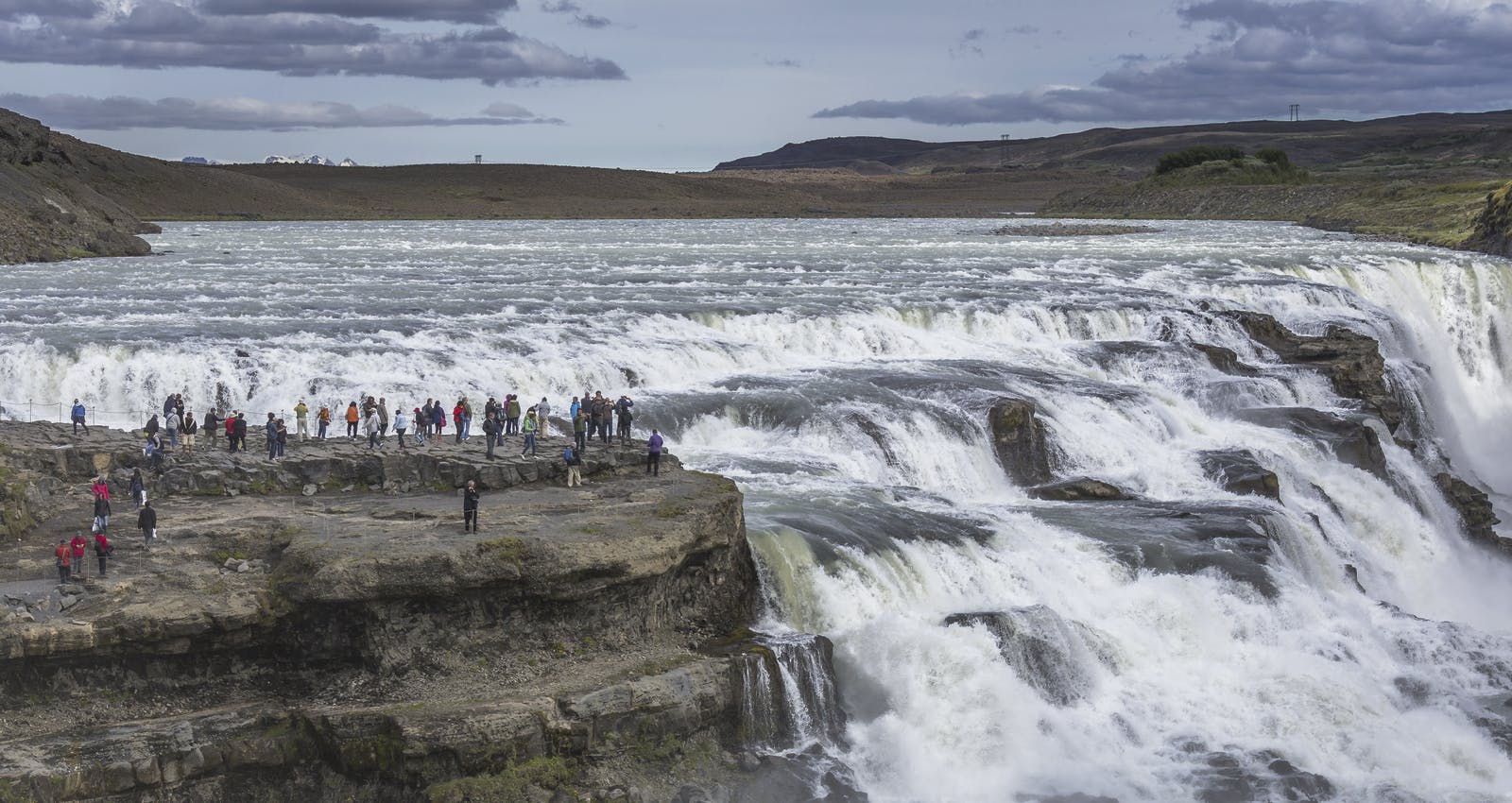
The trails by Gullfoss can be closed, so before taking off, make sure to check whether they are open or closed for visitors.
Dress the Part
Iceland's weather is as unpredictable as your favourite TV show's plot twists. Layers are your friends. Even in summer, the mist from the falls can turn a sunny day into a refreshing shower.
Waterproof Everything
Gullfoss doesn't care about your expensive camera gear or the fact that you just bought a brand-new pair of sneakers. The mist will find a way to get you. Embrace it, but protect your belongings with waterproof gear.
Footwear Matters
If you venture closer to the falls, ensure your footwear is up to the challenge. The path can get slippery, especially in the rainy or snowy seasons. Leave the high heels at home; this is no red carpet.
Timing is Everything
Gullfoss is a 24/7 kind of beauty, but if you're aiming for that perfect shot or a moment of solitude, early mornings or late evenings might be your best bet. The play of sunlight on the water is a photographer's dream.
How To Get to Gullfoss Waterfall
If you are keen on visiting Gullfoss waterfall, here is a brief description of the route from Reykjavík:
- Exit the city centre heading east on Route 1 (Þjóðvegur or The Ring Road). Look for signs indicating "Þjóðvegur" or "The Ring Road."
- Continue on Route 1 Towards Selfoss for about 54 kilometres (33 miles).
- Look for Signs to Gullfoss/Golden Circle. As you progress on Route 1, you need to make a turn onto Route 35.
- Follow that route until you reach Gullfoss. There will be clear signs guiding you to the parking area.
FAQ
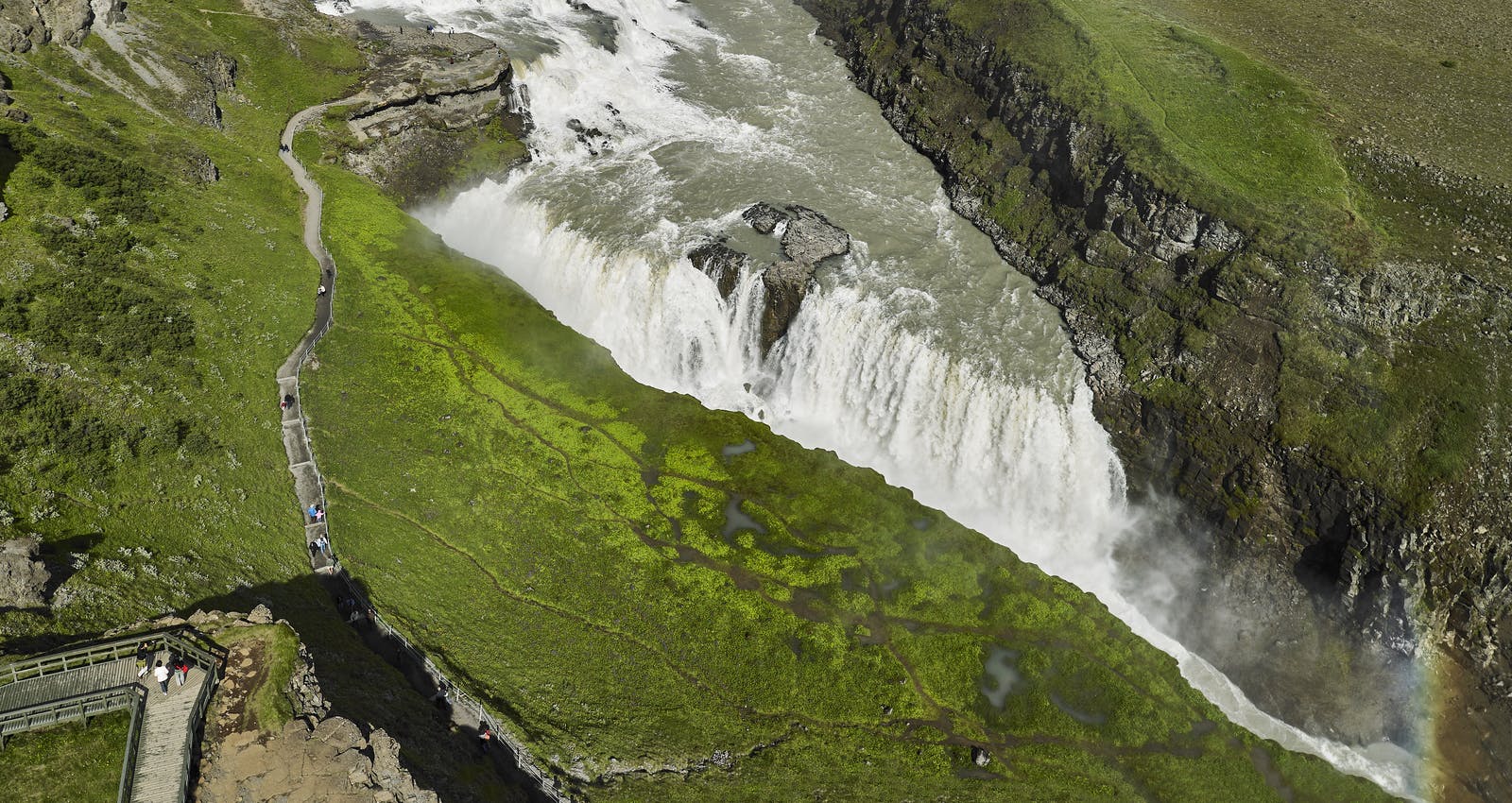
How Far Is Gullfoss Waterfall From Reykjavík?
Gullfoss Waterfall is about 120 kilometres (75 miles) northeast of Reykjavík. The journey typically takes around 1.5 to 2 hours by car, depending on traffic and road conditions.
How Much Time Should I Spend At Gullfoss Waterfall?
If you're mainly interested in viewing the waterfall from the designated platforms, taking photos, and enjoying the scenery, you can spend approximately 1 to 1.5 hours at Gullfoss
What Is Special About Gullfoss?
Gullfoss is not your average waterfall; it's a two-tiered cascade that plunges into a narrow canyon. The first drop is 11 metres, followed by a more dramatic 21-metre drop. This double-cascade design adds to the waterfall's visual drama and impact.







